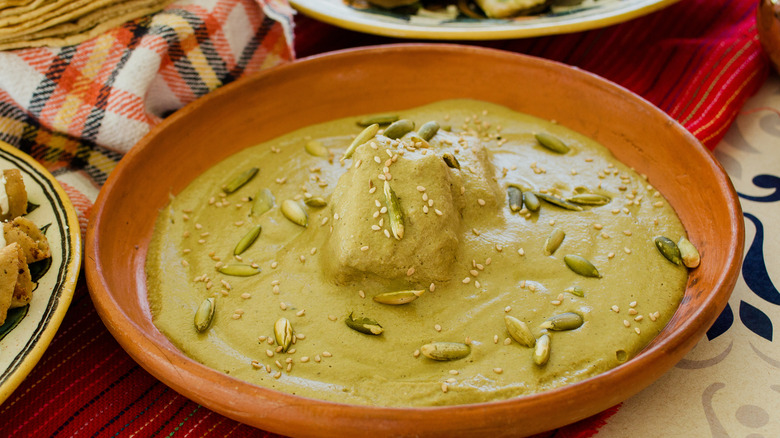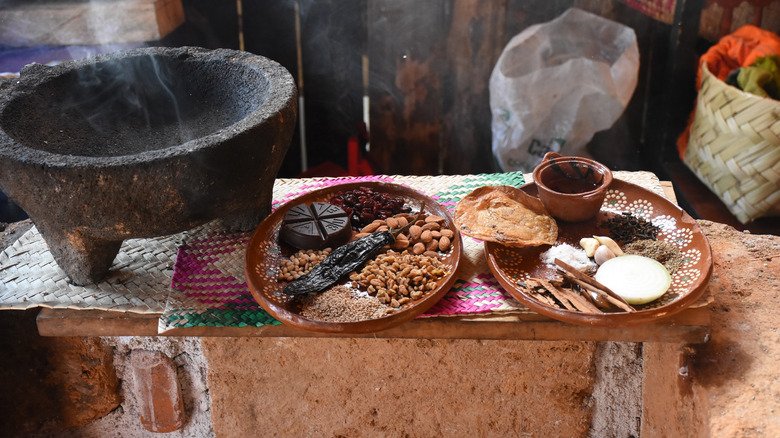Why Mole Can Vary So Much Between Restaurants
You order a plate of your new favorite Mexican dish: mole. When it arrives, it's an entirely different color than the last time you had it. Confused, you ask the server if there's been a mistake, but they assure you this is what you asked for. You have a bite and it's delicious, but it's not what you remember. What happened?
If you're a fan of mole but aren't yet educated about this Mexican classic, you'll be delighted to hear that there are many styles of the dish. According to America's Test Kitchen, the original Aztec dish, molli, translates to "mixture" or "concoction." Moles are definitely mixtures — some have upward of 20 ingredients.
One tasty truth is that the state of Oaxaca is well known for offering seven different styles of mole (via Food Republic). Moles are generally characterized by color or specific ingredient — there are red, black, yellow, poblano, coloradito, chichilo, and the descriptively named manchamantel, aka the "tablecloth-staining" mole (because of its chorizo grease and tomatoes). Mole poblano, also called mole rojo, is a well-known style in the U.S., possibly because a recipe for turkey mole appears in Laura Esquivel's popular book, "Like Water for Chocolate."
How to choose a great mole
Mole recipes vary according to where they came from in Mexico, and not unlike when you order barbecue in the U.S., what you get depends on where you are or where the chef heralds from. If you're wondering how to improve your mole-ordering game, chef Roberto Santibañez suggests to Yahoo Entertainment that diners simply ask what type of mole is being served; knowing where in Mexico the chef is from is also helpful.
Your neighborhood Mexican joint may not have a celebrity chef, but the menu could still be regional cuisine. Many restaurants serve mole poblano and start with a pre-made paste, though not always — the mole could be hand-ground using an old family recipe, especially if it's only offered as a special or once a week. Feel free to inquire about what's actually being done in the kitchen.
Though the chef's place of origin doesn't always tell you exactly what you're going to get, it can give you a good idea. For example, according to Santibañez, if the chef is from Puebla, it's likely to be a sweeter mole poblano with chocolate as an ingredient, while if they're from Vera Cruz, it might be spicier because of the addition of guajillo peppers.
Chef Santibañez also advises that it's a good idea to order black mole if the chef is from Oaxaca — it's probably a very complex and labor-intensive iteration of the dish.

